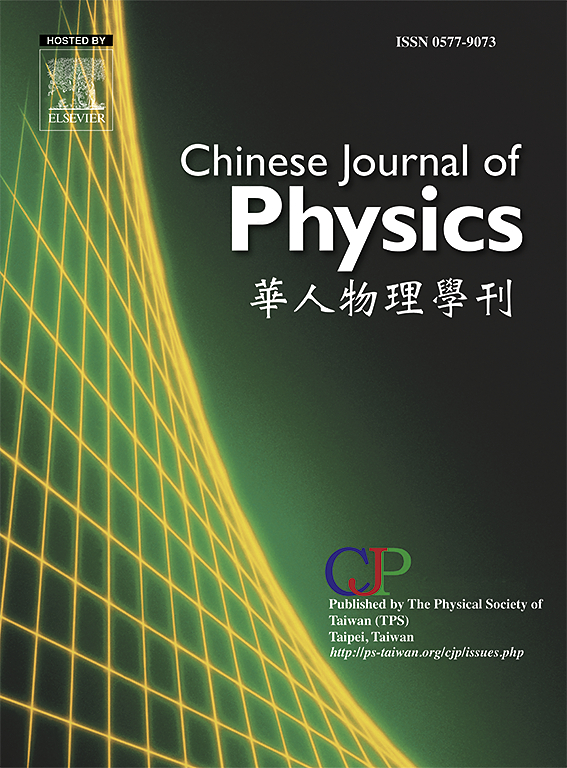超临界CO2中药物溶解度的智能建模:多项式回归,额外树和Huber回归模型和验证
IF 4.6
2区 物理与天体物理
Q1 PHYSICS, MULTIDISCIPLINARY
引用次数: 0
摘要
本研究利用温度、压力、SC-CO2密度和摩尔分数组成的数据集,研究了温度、压力与盐酸厄洛替尼药物性质的关系。事实上,药物在溶剂中的溶解度通过几个模型进行了研究。目的是预测溶剂的密度和药物的摩尔分数。采用Extra Trees (ERT)、Huber Regression (HBR)和Polynomial Regression (PR)三种模型,并采用Sequential Model-Based Optimization (SMBO)进行超参数整定。结果表明,多项式回归在模拟SC-CO2密度和摩尔分数方面具有较高的准确性。对于SC-CO2密度,多项式回归的R2得分为0.9973,RMSE为8.4072E + 00, MSE为7.0682E + 01, MAE为5.1116E + 00。在摩尔分数预测方面,多项式回归的R2得分为0.9919,RMSE为6.3569E-02, MSE为4.0410E-03, MAE为5.7273E-02。SMBO的应用进一步提高了模型的性能,证明了该优化技术的有效性。这些发现对于在各种科学和工业应用中理解和利用SC-CO2的特性具有重要意义。本文章由计算机程序翻译,如有差异,请以英文原文为准。

Intelligence modeling of pharmaceutical solubility in supercritical CO2: Polynomial regression, extra trees, and Huber regression models and validation
This research study investigates the relationship between temperature, pressure, and the properties of Erlotinib hydrochloride drug using a dataset comprising temperature, pressure, SC-CO2 density, and mole fraction. Indeed, the solubility of medicine in the solvent was investigated via several models. The objective is to predict the density of solvent and the mole fraction of medicine. Three models, namely Extra Trees (ERT), Huber Regression (HBR), and Polynomial Regression (PR) are employed, and Sequential Model-Based Optimization (SMBO) is applied for hyperparameter tuning. Results showed promising outcomes, with Polynomial Regression achieving high accuracy in modeling both SC-CO2 density and mole fraction. For SC-CO2 density, Polynomial Regression achieves a significant R2 score of 0.9973, RMSE of 8.4072E + 00, MSE of 7.0682E + 01, and MAE of 5.1116E + 00. In terms of mole fraction prediction, Polynomial Regression achieves an R2 score of 0.9919, RMSE of 6.3569E-02, MSE of 4.0410E-03, and MAE of 5.7273E-02. The utilization of SMBO further enhances the performance of the models, demonstrating the effectiveness of this optimization technique. These findings have significant implications for understanding and utilizing the properties of SC-CO2 in diverse scientific and industrial applications.
求助全文
通过发布文献求助,成功后即可免费获取论文全文。
去求助
来源期刊

Chinese Journal of Physics
物理-物理:综合
CiteScore
8.50
自引率
10.00%
发文量
361
审稿时长
44 days
期刊介绍:
The Chinese Journal of Physics publishes important advances in various branches in physics, including statistical and biophysical physics, condensed matter physics, atomic/molecular physics, optics, particle physics and nuclear physics.
The editors welcome manuscripts on:
-General Physics: Statistical and Quantum Mechanics, etc.-
Gravitation and Astrophysics-
Elementary Particles and Fields-
Nuclear Physics-
Atomic, Molecular, and Optical Physics-
Quantum Information and Quantum Computation-
Fluid Dynamics, Nonlinear Dynamics, Chaos, and Complex Networks-
Plasma and Beam Physics-
Condensed Matter: Structure, etc.-
Condensed Matter: Electronic Properties, etc.-
Polymer, Soft Matter, Biological, and Interdisciplinary Physics.
CJP publishes regular research papers, feature articles and review papers.
 求助内容:
求助内容: 应助结果提醒方式:
应助结果提醒方式:


